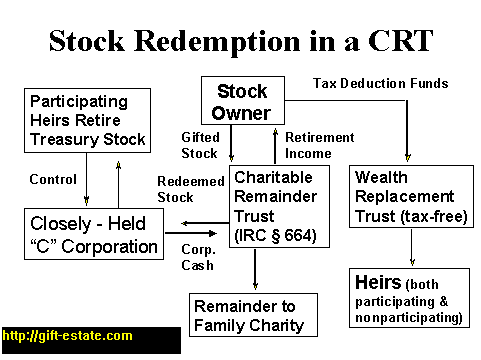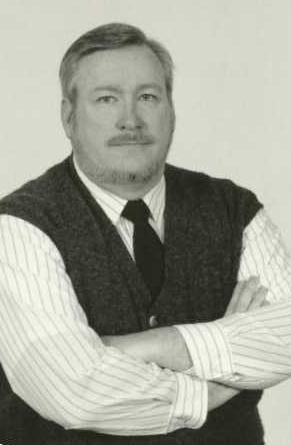Has Estate Tax Repeal Really Changed Anything? – Henry & Associates
The Real World After “Repeal”
Be careful of what you wish for, or it might come true. For those business owners and farmers who lobbied for estate tax repeal, look at the mess you’ve got now. Congress, in its infinite wisdom, put into place the latest version of estate tax relief and saddled the taxpayer with an enormous problem. In general, the new law does raise the amount of property that will be exempt from estate tax and does lower the tax rate. And if dad is fortunate enough to pass away in 2010, his family’s assets will pass without any estate tax, but there may be a new income tax on inherited assets when the heirs sell them at dad’s tax basis. The cruel joke is that the tax repeal evaporates on January 1, 2011 and we are magically transported back to the tax laws that currently govern our planning. Some planners have taken to calling this bill the “Throw Mama from the Train Act of 2001” as they reference the cynical approach that many heirs may fantasize over to avoid taxes. Even Jane Bryant Quinn noted, “In 2010, ailing parents will keep their bedroom doors locked when their children are in the house. It’s going to be a great year to die.” (Newsweek 6/11/2001)
Beside the classic timing problem of death, which should never be influenced by tax savings, this new law may also affect planning by discouraging transfers to surviving spouses, it may negatively affect the use of some charitable trusts and it provides a disincentive to make gifts to family members.
Economic Growth and Tax Relief Reconciliation Act of 2001
What’s this mean to business owners concerned about practical applications? It means there will be more uncertainty and more expense since any strategy will have to reflect the concerns of either owing no tax or having to plan for the tax being palmed off on the taxpayer by a Congress that leaves the legislation alone or tinkers with it again and reintroduces us to a tax when revenue shortfalls become apparent. Since the existing tax has been with us since 1916, and there have been inheritance taxes in one form or another going back to the earliest days of the republic, don’t hold your breath expecting real relief any time soon.
|
|
New Estate Tax Schedule
Economic Growth and Tax Relief Reconciliation Act of 2001 |
 |
| Gift Tax Exemption goes to $1,000,000, but no longer linked or “unified” with estate tax |
Estate and Generation Skipping Tax (GST) rates and scheduled implementation linked |
Sunset provision may complicate planning |
| Year |
Exclusion |
Top Rates |
| 2002 |
$1,000,000 |
50% |
| 2003 |
$1,000,000 |
49% |
| 2004 |
$1,500,000 |
48% |
| 2005 |
$1,500,000 |
47% |
| 2006 |
$2,000,000 |
46% |
| 2007 |
$2,000,000 |
45% |
| 2008 |
$2,000,000 |
45% |
| 2009 |
$3,500,000 |
45% |
| 2010 |
N/A |
Repealed |
| “Sunset” provision kicks in 1/1/2011 |
$1,000,000 |
50% |
| Final bill (291 pages) HR 1836 |
Plain text (258 pages) HR 1836 |
JCT (15 pages) Summary |
| No step up in basis for all inherited assets, new and complicated rules will come into place. Within the unlimited marital deduction, any step-up is soon to be limited to $3,000,000 passing from decedent to spouse. |
Allows a new basis for $1,300,000 of property inherited from the decedent, but no step-down or step up beyond the $1.3 million |
CCH Tax Briefing changes presented to planners with EGTRRA 2001 (HR 1836 is now Public Law 107-16) and a Deloitte & Touche Review and a Aspen Publishing Review of EGTRRA 2001 |
| State death tax credit will be reduced by 25% in 2002, 50% in 2003, 75% in 2004, repealed in 2005, and replaced instead with a deduction for state death taxes paid |
The gift tax is not repealed and is no longer linked to the estate tax. The gift tax exclusion amount will remain at $1,000,000 from 2002 onward. |
No QFOBI (section 2057) after 2004 |
Why does tax simplification complicate things?
The biggest disservice politicians and lobbyists have done is to imply that tax repeal means that planning won’t be necessary, and that’s just plain silly. Clients are already skittish about planning their estates and any excuse to avoid those hard decisions is welcome as they continue postponing important planning. It’s understandable that the topic might be unpleasant since it reeks of death or disability and potential family discord. However, a proactive view is what’s needed, if unnecessary income and estate taxes are to be legally avoided.
Work for lawyers and accountants as financial advisers may double or triple.
Without revisions, existing estate plans could cause families to pay taxes unnecessarily because the estate tax repeal was not coordinated with other tax laws, widows may be left with far less than they expected, children and grandchildren may be stuck with huge tax bills that could have been avoided. Some lawyers predict more litigation over which heirs will receive tax-favored assets, even in families whose members have worked together to build and preserve their wealth. “They should have called the tax cut the Estate Tax Lawyers Full Employment Act of 2001,” said Jonathan G. Blattmachr, the estate tax expert at Milbank, Tweed, Hadley & McCloy in New York. Other tax lawyers nationwide closely follow the insights of Mr. Blattmachr, who advises many of the wealthiest families in America.
(June 14, 2001 NY Times)
In the course of presenting seminars across the country, one of the principal reasons people attend is to learn how to avoid those feared and hated taxes. The reality is that few people actually pay a federal estate tax, and with some planning, even fewer would need to worry about them at all. The problem is that when clients hear the word “repeal”, they assume that well-intentioned politicians have eliminated their need for planning; and that’s far from the truth. Anyone with a farm, business or significant assets has more to worry about than just taxes, even avoidable ones. The farm or business owner has to worry about preserving the value of the business, creating a plan of action to address succession, training family or key employees to carry on whether or not death, disability or retirement pops up on the horizon. Estate planning more properly has to do with maintaining control and providing flexible options, making sure that assets are protected and passed down when, where and how to heirs in an organized fashion all the while limiting the unnecessary expenses. Don’t let the tax tail wag the dog.
Should your family have a tax-planning problem, these changes will require you to seek more sophisticated assistance. The old rules and standards may now no longer apply. For example, it was a given that depleting the estate and shrinking its size was a great planning technique. Now that the gift tax and the estate tax are no longer linked, it becomes more of a balancing act. In addition, there are new concerns about advising clients to gift assets from modest sized estates when by retaining them the heirs could inherit with a “step up” in basis, as compared to gifts made at the owner’s tax basis. Of course, this all depends on whether Congress can be trusted to extend the “repeal” beyond 2010, in which case, no one can plan effectively when the target keeps moving. This means that any tax planning needs to be reviewed annually and your advisors need to be current because there are a lot of traps for the unwary built into this legislation. Remember:
- There will be expenses associated with death.
- The more money you have, the greater the expenses.
- The best way to protect from financial uncertainty is to be prepared, organized, liquid and flexible.
- Wish for good luck, you’ll need it.
A Chronology of EGTRRA 2001 by Professor Robert LeClair
2001
New 10% income tax bracket created; effective January 1, 2001
Tax rates fall by 1% effective July 1, 2001: 27%; 30%; 35%; 38.6%
Child credit increases from $500 to $600
Refund checks of $300 to $600 mailed to taxpayers
2002
Estate tax exemption increases to $1,000,000; top rate = 50%
Education IRA contribution increases to $2,000
Traditional or Roth IRA contribution increases to $3,000
50-plus “Catch-up” IRA contribution is $500
401(k) maximum contribution increases to $11,000
50-plus “Catch-up” 401(k) contribution is $1,000
SIMPLE IRA/401(k) contributions increase to $7,000
2003
Estate tax exemption is $1,000,000; top rate = 49%
50-plus “Catch-up” IRA contribution is $500
401(k) maximum contribution increases to $12,000
50-plus “Catch-up” 401(k) contribution is $2,000
SIMPLE IRA/401(k) contributions increase to $8,000
2004
Estate tax exemption is $1,500,000; top rate = 48%
Tax rates fall by 1%: 26%; 29%; 34%; 37.6%
50-plus “Catch-up” IRA contribution is $500
401(k) maximum contribution increases to $13,000
50-plus “Catch-up” 401(k) contribution is $3,000
SIMPLE IRA/401(k) contributions increase to $9,000
2005
Estate tax exemption is $1,500,000; top rate = 47%
Child credit increases to $700
Traditional or Roth IRA contribution increases to $4,000
50-plus “Catch-up” IRA contribution is $500
401(k) maximum contribution increases to $14,000
50-plus “Catch-up” 401(k) contribution is $4,000
SIMPLE IRA/401(k) contributions increase to $10,000
Married deduction increases to 174% of single deduction
2006
Estate tax exemption is $2,000,000; top rate = 46%
Tax rates fall again: 25%; 28%; 33%; 35%
50-plus “Catch-up” IRA contribution is $1,000
401(k) maximum contribution increases to $15,000
50-plus “Catch-up” 401(k) contribution is $5,000
Married deduction increases to 184% of single deduction
2007
Estate tax exemption is $2,000,000; top rate = 45%
50-plus “Catch-up” IRA contribution is $1,000
Married deduction increases to 187% of single deduction
2008
Estate tax exemption is $2,000,000; top rate = 45%
Traditional or Roth IRA contribution increases to $5,000
50-plus “Catch-up” IRA contribution is $1,000
Married deduction increases to 190% of single deduction
2009
Estate tax exemption is $3,500,000; top rate = 45%
Child credit increases to $800
Married deduction increases to 200% of single deduction
2010
Estate tax is repealed
Child credit increases to $1,000
2011
All of the above provisions are technically considered temporary under the Congressional Budget Act of 1974. They will expire after December 31, 2010, unless Congress reenacts them
© 2001 – Leimberg Services.com — subscribe for newsletters and expert commentary
 CONTACT US FOR A FREE PRELIMINARY CASE STUDY FOR YOUR OWN CRT SCENARIO or try your own at Donor Direct. Please note — there’s more to estate and charitable planning than simply running calculations, but it does give you a chance to see how the calculations affect some of the design considerations. Which tools work best in which planning scenarios? Check with our office for solutions.
CONTACT US FOR A FREE PRELIMINARY CASE STUDY FOR YOUR OWN CRT SCENARIO or try your own at Donor Direct. Please note — there’s more to estate and charitable planning than simply running calculations, but it does give you a chance to see how the calculations affect some of the design considerations. Which tools work best in which planning scenarios? Check with our office for solutions.





 Vaughn W. Henry
Vaughn W. Henry E-mail:
E-mail:























 Vaughn W. Henry
Vaughn W. Henry


 CONTACT US FOR A
CONTACT US FOR A 